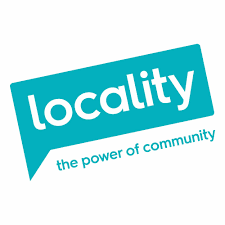Community wellbeing case study synthesis

Case study synthesis: community hubs and green space
We worked with Leeds Beckett University and the University of Liverpool to identify robust methods to collate, review and synthesise practice-based case study evidence.
We also carried out a pilot synthesis on practice-based community wellbeing case studies focusing on community-based interventions (projects, initiatives, services or programmes) that aimed to improve social relations and community wellbeing through better community infrastructure (places and spaces).
This built on our 2018 systematic review. This review was refreshed in 2023.
In total, 24 practice-based case studies were included in the synthesis.
This study has developed a better understanding of what practice-based case studies are, what they offer, and how such information should be processed. A working definition of a practice-based case study was developed. The methods review and pilot study also led to a better understanding of what ‘good’ practice-based community wellbeing case study should cover and the attributes that might indicate a case study is of good quality.
Case study evidence provides important and rich detail on these projects and activities, and how they are delivered.
This provides policy makers and practitioners with tangible illustrations to refer to in the design and modification of interventions.
For a summary of the report, download the accompanying briefing document.
Community hubs: case study evidence
Specific to the delivery of community hubs, practice based case studies highlighted the following.
- Additional community wellbeing benefits: community empowerment, new groups in the community forming.
- Additional individual wellbeing benefits: from opportunities for social interactions and improvements in
mental health. - Organisational benefits: opportunities for networking and partnership, raising organisational profiles, improved access to commissions/funding.
- Delivery: Multiple activities developed, organised/ delivered by range of stakeholders with a variety of learning techniques used to develop and sustain projects.
- Unforeseen outcomes: new informal support networks in the community, creation of skills training programmes, ‘peer-led’ becoming widely appreciated, asset-transfer programme developed, reduction in health and social inequalities as community hubs support disadvantaged communities.
Green space: case study evidence
Specific to the delivery of green space interventions, practice based case studies highlighted:
- Additional community wellbeing benefits: opportunities for social activities and volunteering, increased skills, knowledge and confidence within the community, community empowerment via participant-led activities
- Additional individual wellbeing benefits: gaining employment and a sense of purpose, a transformative change in some people’s lives.
- Organisational outcomes: strengthened organisational capacity; strengthened or new partnerships; increased influence or organisational profile.
- Delivery: multiple and layered interventions developed in response to local need and to reach disadvantaged groups, effectively reduce wellbeing inequalities and achieve broad aims of wellbeing and empowerment.
- Learning processes to gather insights to improve interventions were prominent in some cases.
- Mechanisms identified: building connections and partnerships, asset-based approaches, adapting to local need, community participation and co-production
Methodology and guidance
Our guide to practice-based case study evidence will introduce you to what it is, its uses and limitations. It will show you how to put together a case study of your project or activity quickly and transparently, and how to share it with others, bringing together what you have learned in a structured, clear and thorough way, so that you can communicate helpful insights to other practitioners, funders, researchers and the communities you work with.
Our guide to synthesising practice-based case study evidence provides a step-by-step approach to maximizing data and producing robust, potentially transferable and generalisable findings.
Downloads
You may also wish to read the blog article on this document.
Downloads
You may also wish to read the blog article on this document.
![]()
[gravityform id=1 title=true description=true ajax=true tabindex=49]



